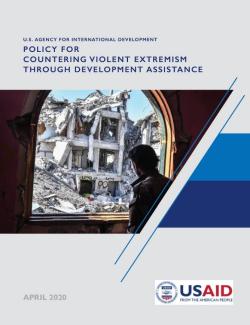The U.S. Agency for International Development (USAID) is an international leader in violence prevention and countering violent extremism (CVE). USAID and its partners have worked to counter violent extremism in Africa, Asia, Europe, and the Middle East for almost two decades. The Agency works through partner nations, international organizations, and implementing partners to provide technical and programmatic support to regional, national, and local governments; civil society, and the private sector.
As the U.S. government’s lead implementer of CVE programming, USAID contributes to U.S. national security by limiting the reach and impact of violent extremist organizations (VEOs) to threaten U.S. interests and strengthening the resilience of our local partners. USAID has ongoing CVE programs in more than 20 countries across the world, and has established itself as a leader in CVE analysis and programming within the U.S. government and internationally. USAID operates in both permissive and non-permissive environments in support of local governments and civil society, pushing back and denying space to VEOs such as al-Qaida, the Islamic State of Iraq and Syria (ISIS) and its adherents, Boko Haram, and numerous other VEOs, to include Racially or Ethnically Motivated Violent Extremists (REMVE).
USAID’s CVE Policy is based on significant evidence and lessons learned over the past decade; the updated policy builds on the foundation USAID established when it wrote the first-ever government policy on CVE in 2011. The Policy, Countering Violent Extremism Through Development Assistance, provides updated guidance for USAID’s field Missions. CVE programming is now designed with two goals in mind:
- Reducing the risk of recruitment into and support for violent extremism; and
- Building the capacity and commitment of our partners in government, civil society, youth organizations, and the private sector to prevent or counter violent extremism.
USAID has learned a great deal about violent extremism and terrorism since the Sept. 11, 2001 terrorist attacks. USAID understands that effective CVE programming must nest within a broader security, peacebuilding, and prevention framework to disrupt pathways to the outbreak, escalation, or recurrence of violence. As violent extremist organizations (VEOs) continue to evolve, adapt, and learn from one another, so must USAID and its partners be proactive and innovative to mitigate and respond to changing threats.
LEARNING, ADAPTING, AND INNOVATING
Through rigorous learning, USAID acknowledges that programming designed to strengthen and influence local institutions and communities systemically is likely having a greater effect on reducing radicalization and recruitment to violent extremism than programming designed to address an individual driver, such as unemployment or illiteracy.
VEOs capitalize on the instability and uncertainty caused by growing economic inequality, shocks due to climate change, and continuing effects of the COVID-19 pandemic. This requires CVE practitioners to adapt and innovate in the face of VEO attacks on overstretched governments, the spread of disinformation, and the manipulative recruitment of vulnerable people struggling under the weight of cascading and compounding crises.
Evidence shows that violence, like disease, is contagious. Those exposed to violence and trauma are more likely to be victimized further or to become perpetrators themselves. USAID’s CVE programming aims to interrupt the cycle of violence by fostering resilience in our partner countries to prevent and counter violent extremist challenges themselves.
USAID is constantly gathering both quantitative and qualitative data to design, monitor, evaluate, and learn from this programming. Based on rigorous, locally-informed assessments and analysis, USAID’s approach concentrates on strengthening governance, promoting tolerance and building social cohesion, and supporting youth and women’s protection and protection and empowerment, social and economic inclusion, media literacy, reconciliation, and conflict mitigation. Activities are tailored to meet the specific political environments, threats, and needs of each community.
STRATEGIES THAT GUIDE USAID’S CVE EFFORTS
U.S. Strategy to Prevent Conflict and Promote Stability
U.S. Strategy to Anticipate, Prevent, and Respond to Atrocities (SAPRA)
Women, Peace, and Security (WPS) Strategy and USAID WPS Implementation Plan
2011 USAID Development Response to Violent Extremism and Insurgency

